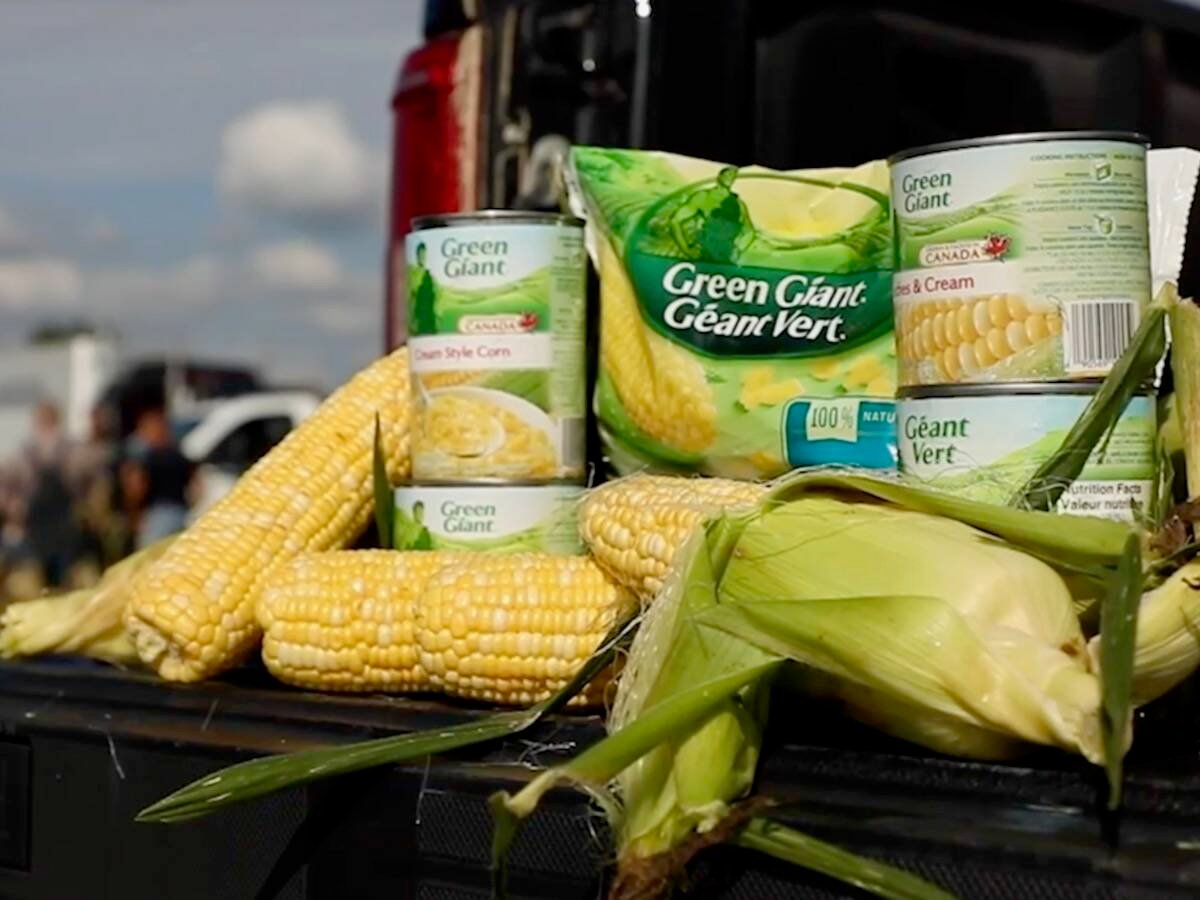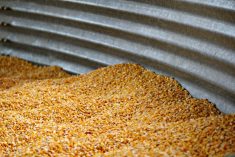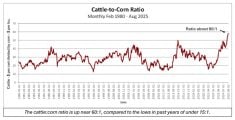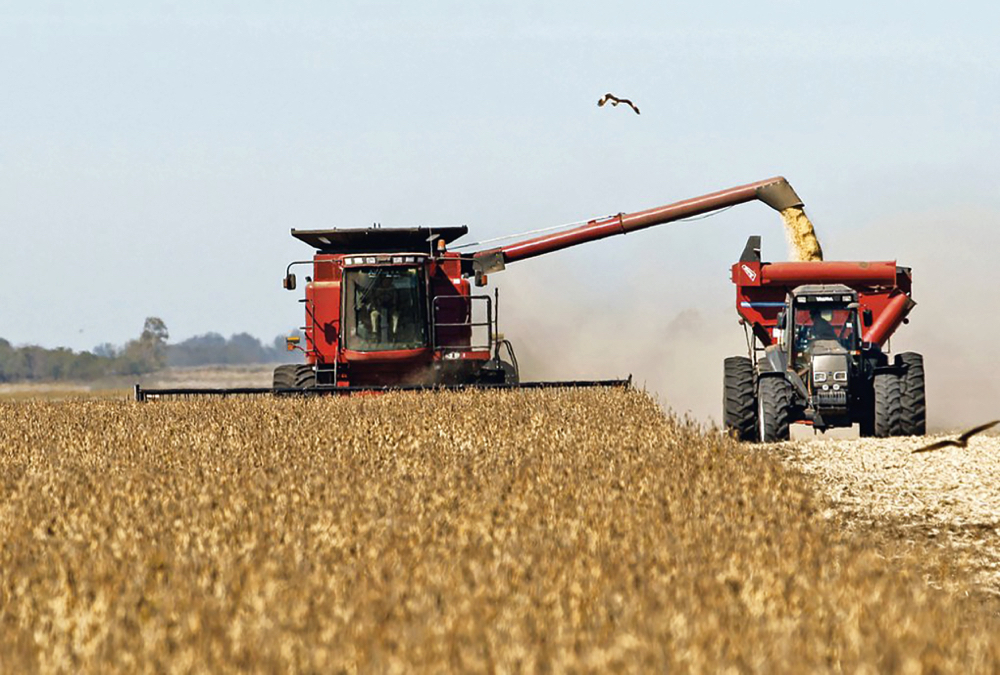Over the past 30 days, as of mid-June, the Ontario growing region received normal to above normal precipitation and temperatures were two to three degrees Celsius above average levels. In some cases, the northern regions received record rainfall.
Corn, soybean and wheat crops are experiencing greenhouse conditions. At this stage of the growing season, we factor in average yields because the longer-term forecast can be variable. We’re not making any changes to our Ontario production estimates. Demand for old crop corn and soybeans is subsiding. At the same time, buyers are waiting until the crop is more certain to extend new crop coverage.
Quick look
Soybeans: The USDA has increased projected yields for South America.
Corn: The market is telling farmers not to hold old crop stocks into new crop positions.
Wheat: Russian exports will determine market direction.
Read Also

Packer buys Green Giant, Le Sieur veg brands from U.S. owner
A Quebec-based processor’s deal to buy the Green Giant and Le Sieur packaged and frozen vegetable brands in Canada from a U.S. owner clarifies the status of two popular retail brands grown by Canadian farmers.
Earlier in spring, the corn and soybean markets incorporated a risk premium due to the late planting period and uncertainty in production. This risk premium is now eroding as the crop develops under favourable conditions. As of June 12, the U.S. corn crop was rated 72 per cent good to excellent and the soybean crop was 70 per cent good to excellent.
The USDA June World Agriculture Supply and Demand Estimates (WASDE) were considered neutral for the corn, soybean and wheat markets. The USDA decreased the U.S. soybean carryout and increased corn ending stocks.
At this stage of the crop year, changes to the 2021-22 fundamentals have little influence on the market because the bulk of old crop demand is covered. Brazil’s Safrinha corn harvest is in the early stages and yields are coming in as expected. Despite the drier conditions earlier in May, the Safrinha crop has held up well.
The Northern Hemisphere wheat harvest starts in June and ends in October. Wheat farmers in the U.S. and Europe will be active sellers over the next month to capture the higher prices.
The U.S. consumer price index in May was up 8.3 per cent from May 2021. Eurozone inflation during May reached a record of 8.1 per cent. The Canadian consumer price index for April was up 6.8 per cent and will likely reach eight per cent during the summer. The U.S. Federal Reserve and the Bank of Canada will tackle inflation by raising their benchmark lending rates.
Gas prices are reaching record highs across North America. The U.S. economy is bound to experience a recession, which is negative for the Canadian dollar. Ontario and parts of the Midwest are expected to experience rolling “blackouts” during the summer due to energy constraints. The reimplementation of COVID-19 restrictions in Shanghai and other Chinese cities is setting a negative tone for all commodity markets. Demand for resources from the world’s manufacturing centre tends to slow during COVID lockdowns.
Soybeans
Ontario on-farm soybean stocks are expected to drop to 3,000 tonnes on July 31, down from 7,000 tonnes on July 31, 2021. We continue to project an Ontario soybean crop of 4.1 million tonnes, which is unchanged from the 2021 output but up from the Ontario five-year average of 3.9 million tonnes. Total beginning on farm supplies for the 2022-23 crop year will be similar to last year.
Ontario farmers sell approximately 70 per cent of the crop from Aug. 1 through Dec. 31. They sell another 10 to 15 per cent from Jan.1 through March 31. During the 2021-22 crop year, the highest prices were in the spring period. This reinforces our strategy to sell regular increments throughout the crop year to achieve a higher overall average price.
Markets can be unpredictable. This past year once again proves that elevator companies buy 70 per cent of their volume in the lower third of the 52-week price range for the crop year.
The USDA WASDE report was considered neutral for the soybean complex. U.S. soybean export sales are coming in larger than expected for the 2021-22 crop year. Therefore, the USDA increased the export projection, resulting in lower carryout. The U.S. soybean carryout for the 2021-22 crop year is expected to finish near 5.6 million tonnes, the lowest in six years.
The USDA increased South American soybean production on the June WASDE report, which was a surprise. Brazilian production was increased by one million tonnes to 126 million tonnes and Argentine output was estimated at 43.4 million tonnes, up from 42 million tonnes on the May report. The increase in South American output was an overriding factor to the market.
U.S. production for the 2022-23 campaign was left at 126.3 million tonnes. Without going into details of demand, the U.S. 2022-23 carryout was projected to come in at 7.6 million tonnes, up two million tonnes from the 2021-22 crop year. If U.S. yields turn out as expected, the soybean market will continue to trend lower into the harvest period. Currently, U.S. and Ontario soybean export offers are premium to Brazil for July by US$8-$10 per tonne.
What to do: We’ve advised Ontario farmers to be 100 per cent sold on old crop and 10 to 15 per cent sold on expected new crop production. Once the upcoming crop is more certain, we’ll make a recommendation to be 20 per cent sold on new crop.
Corn
Corn exports have been stronger than expected. Canadian crop year-to-date corn exports for the week ending June 5 were 1.6 million tonnes, up from 1.2 million tonnes last year. Exports are higher than earlier projections, while domestic demand is also expected to finish above year-ago levels. Therefore, we’ve lowered our on-farm ending stocks projection from 800,000 tonnes in our previous issue to only 450,000 tonnes.
Ontario corn stocks will be historically tight on Aug. 31. We’re not making any changes to our Ontario corn production estimate of 9.7 million tonnes. This is up from the 2021 output of 9.5 million tonnes and up from the five-year average of 8.9 million tonnes.
In the previous issue, the old new crop inverse in the elevator system was averaging 70 cents/bushel. This inverse is now averaging 60 cents/bushel. The market is telling farmers not to hold old crop stocks into new crop positions.
U.S. corn export sales for the 2021-22 crop year are running 14 per cent below year-ago levels. Therefore, the USDA lowered the U.S. export projection by 1.3 million tonnes and basically added this onto the carryout. U.S. ending stocks for the 2021-22 crop year are now projected to come in at 37.7 million tonnes, up 1.1 million tonnes from the May estimate.
The USDA made changes to South American production. Argentine output was left at 53 million tonnes while the total Brazilian crop was kept at 116 million tonnes. The main point is that Brazilian exports have potential to reach 44 million tonnes, up 23 million tonnes from last year. The year-over-year increase in Brazilian corn production and exports will largely offset the decrease in Ukraine exports.
For the 2022-23 crop year, the USDA is projecting U.S. production to come in at 367 million tonnes, down from last year’s output of 384 million tonnes. The average U.S. corn yield was unchanged at 177 bu./acre. Since the May report, North Dakota and Minnesota farmers have finished planting and the delays were not as significant as earlier anticipated. We may see U.S. corn yields reach up to 173-174 bu./acre if average weather conditions materialize.
At the time of writing this article, Brazilian corn offers were US$15-$20/tonne discount to U.S. offers out of the Gulf. Export demand is slowing down but U.S. ethanol production continues to run at higher levels. Wheat prices are high enough that we won’t see hard red winter move into feed rations during harvest. The corn market has a bearish sentiment as demand eases and new crop develops under favourable conditions.
What to do: We’ve advised Ontario farmers to be 100 per cent sold on old crop and 10 per cent sold on expected new crop production. Corn typically makes a seasonal low in September. We may still see the corn market experience a “hot and dry” rally in July so be patient to add onto sales.
Wheat
Ontario winter wheat has headed out. Fusarium could be a problem this year, especially in the northwestern growing regions, but it’s hard to assess at this time. Yields are expected to be slightly above average. We’re now projecting the Ontario winter wheat production to reach 1.9 million tonnes, down from 2.8 million tonnes last year. In a normal year, we see soft red winter wheat trade into feed channels, especially during the harvest period. Given the sharp wheat premium over corn, we won’t see wheat move into feed channels this year unless there are high levels of fusarium.
The price structure on the world market has changed from May. At the time of writing this article, Ontario soft red winter was quoted at US$415/tonne f.o.b. St. Lawrence, French soft wheat was offered at US$415/tonne and U.S. No. 2 SRW was valued at US$415/tonne f.o.b. the Gulf.
All eyes were on Russian and Ukraine data on the June USDA WASDE report. The USDA expects Russia to produce 81 million tonnes of wheat this year, up from the 2021 output of 75 million tonnes. Exports are expected to reach 40 million tonnes in the 2022-23 campaign, up from the 2021-22 crop year exports of 33 million tonnes. Ukraine production is expected to come in at 21.5 million tonnes, down 12 million tonnes from last year. Ukraine wheat exports are projected to be 10 million tonnes, which is a year-over-year decrease of nine million tonnes.
Total U.S. production will reach 47 million tonnes this year, up from 44 million tonnes in 2021. European production will come in at 136 million tonnes, down only three million tonnes from the 2021 output. We’re going to see a minor year-over-year decrease in global wheat production but there is no shortage.
The Canadian and U.S. spring wheat growing season is still ahead. The Northern Hemisphere is in good shape as far as production. Trade flows are a different story. Market direction will be dependent on Russian exports. Some traders are skeptical regarding the USDA projection. It will take political will from all players to ensure Russia can satisfy traditional wheat markets. Harvest pressure from U.S. and European farmers will overhang the market, capping any significant rallies.
What to do: We’ve advised Ontario farmers to be 100 per cent sold on old crop and 10 per cent sold on new crop. Our next selling recommendation will likely be in October.













